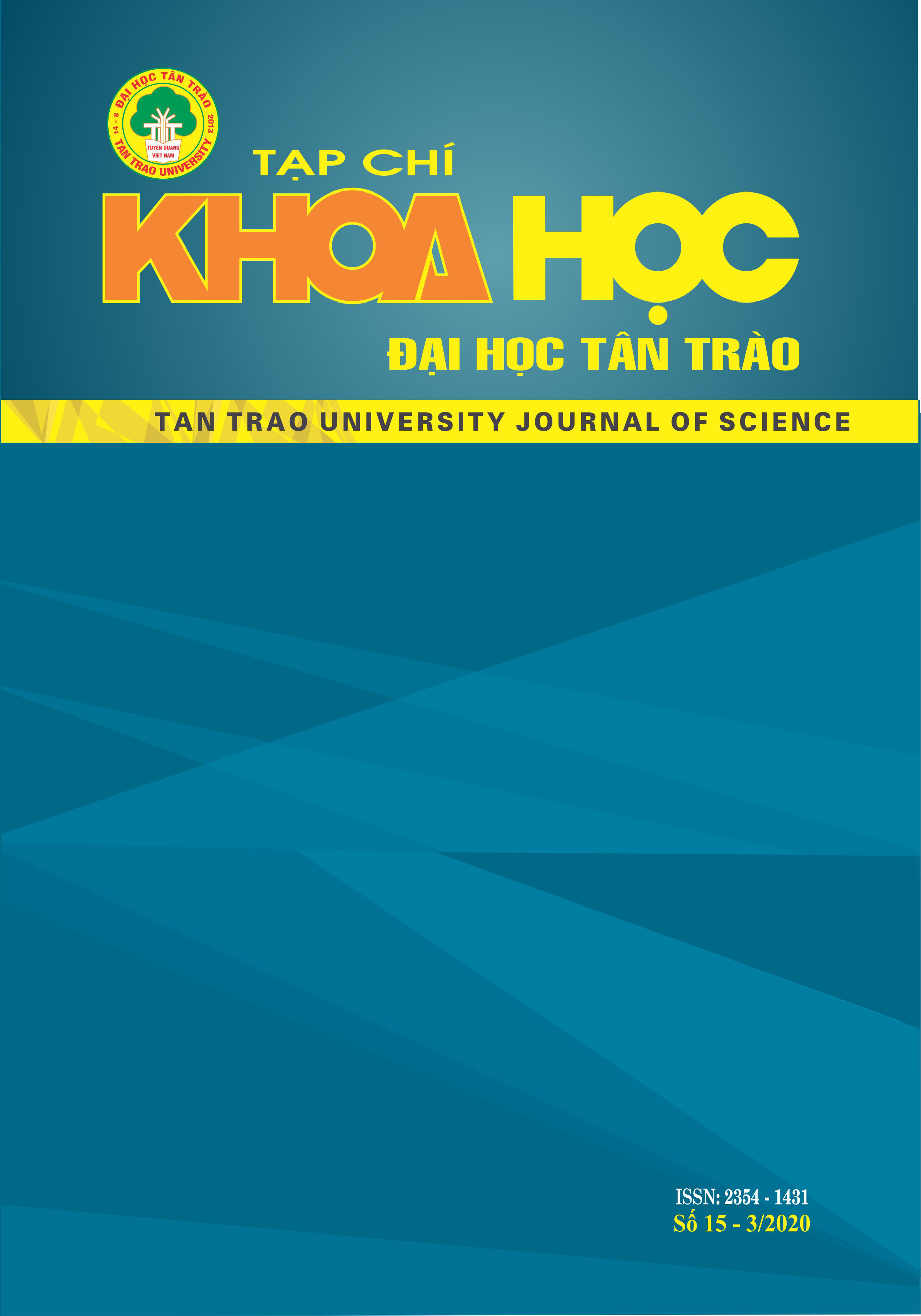Nghiên cứu tỷ lệ phối trộn giá thể hữu cơ làm bầu ươm cây giống keo lai BV10, BV33 sản xuất bằng phương pháp nuôi cấy mô
DOI:
https://doi.org/10.51453/2354-1431/2019/292Từ khóa:
Giá thể, Phối trá»™n, Keo lai BV10, Keo lai BV33Tóm tắt
Trong các thành phần của bầu ươm, giá thể và phân bón có vai trò cực kỳ quan trọng. Các loại giá thể như: Cát vàng, xơ dừa, mùn cưa... đã qua xử lý, khi trộn đều với đất nhỏ sẽ làm tăng thêm độ tơi xốp, giúp đất không bị nén lại sau khi tưới nước hoặc để lâu ngày. Một số loại giá thể như xơ dừa, mùn cưa…có khả năng giữ nước rất hiệu quả, giúp cây con trồng trong bầu ươm có sức sống càng cao. Trong nghiên cứu này sử dụng các loại vật liệu như: đất đỏ, phân chuồng hoai mục, mùn cưa, xơ dừa, vôi bột, nước men vi sinh để phối trộn làm giá thể ươm giống keo lai BV10, BV33 sản xuất bằng phương pháp nuôi cấy mô, kết quả nghiên cứu cho thấy: Tỷ lệ phối trộn chất hữu cơ khác nhau làm tăng chiều cao cây và có ý nghĩa trên loại đất nghiên cứu, cụ thể: Chiều cao cây đạt cao nhất ở công thức 5 (18,86 cm) vào giai đoạn 60 ngày sau khi trồng và 31,20 cm vào giai đoạn 90 ngày sau khi trồng. Đường kính cổ rễ: đạt cao nhất ở công thức 5 (1,42 cm) vào giai đoạn 60 ngày sau khi trồng và 2,88 cm vào giai đoạn 90 ngày sau khi trồng. Số lượng rễ và chiều dài rễ: đạt cao nhất ở công thức 4 và 5 (4 rễ) và 1,37 cm vào giai đoạn 90 ngày sau khi trồng. Tỷ lệ cây đạt tiêu chuẩn xuất vườn của cây giống tương đối cao trên 80% ở các công thức có phối trộn hữu cơ. Đạt cao nhất ở công thức 5 (90,5%) và công thức thấp nhất ở công thức 2 (80,5%).
Tải xuống
Tài liệu tham khảo
1. Bộ Nông nghiệp &PTNT (2006) Tiêu chuẩn ngành 04:TCN74:2006 về “Quy trình kỹ thuật nhân giống và trồng rừng keo lai vô tính”
2. Nguyễn Như Hà (2016), Giáo trình Độ phì nhiêu của đất, Nhà xuất bản Nông nghiệp
3. Trần Vĩnh (2016), Dây truyền công nghệ sản xuất giá thể sạch sản xuất cây giồng vườn ươm. Viện Khoa học kỹ thuật Nông lâm nghiệp Tây Nguyên.
Tải xuống
Đã Xuất bản
Cách trích dẫn
Số
Chuyên mục
Giấy phép

Tác phẩm này được cấp phép theo Giấy phép Quốc tế Creative Commons Attribution-ShareAlike 4.0 .
Bài báo được xuất bản ở Tạp chí Khoa học Đại học Tân Trào được cấp phép theo giấy phép Ghi công - Chia sẻ tương tự 4.0 Quốc tế (CC BY-SA). Theo đó, các tác giả khác có thể sao chép, chuyển đổi hay phân phối lại các bài báo này với mục đích hợp pháp trên mọi phương tiện, với điều kiện họ trích dẫn tác giả, Tạp chí Khoa học Đại học Tân Trào và đường link đến bản quyền; nêu rõ các thay đổi đã thực hiện và các nghiên cứu đăng lại được tiến hành theo cùng một bản quyền.
Bản quyền bài báo thuộc về các tác giả, không hạn chế số lượng. Tạp chí Khoa học Tân Trào được cấp giấy phép không độc quyền để xuất bản bài báo với tư cách nhà xuất bản nguồn, kèm theo quyền thương mại để in các bài báo cung cấp cho các thư viện và cá nhân.
Mặc dù các điều khoản của giấy phép CC BY-SA không dành cho các tác giả (với tư cách là người giữ bản quyền của bài báo, họ không bị hạn chế về quyền hạn), khi gửi bài tới Tạp chí Khoa học Đại học Tân Trào, tác giả cần đáp ứng quyền của độc giả, và cần cấp quyền cho bên thứ 3 sử dụng bài báo của họ trong phạm vi của giấy phép.






